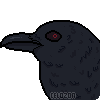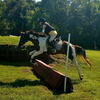Congrats Rae and Kay on artist position!!!
Also welcome back caff ^^ I'm sorry to hear that things aren't going so great for you. Things will get better! I hope you don't feel sad for long :3
CBA Fanclub - Open!
-

CCrow - Posts: 2061
- Joined: Thu Jan 06, 2011 4:07 am
- My pets
- My items
- My wishlist
- My gallery
- My scenes
- My dressups
- Trade with me
Re: CBA Fanclub - Open!
overcaffienated. wrote:Sales
Calvars For Sale
Special offer! Pretty thing has a line edit, but since it's an artist entry has a 15% chance of passing. Lost its tail in an accident. PM Lord Raegami with offers!
GUYS MY EDITED ARTIST ENTRY IS UP FOR A cal AUCTION
just note only the FUR can be possibly passed down, the
tail can't.
-

koegami - Posts: 31718
- Joined: Mon Feb 20, 2012 7:12 am
- My pets
- My items
- My wishlist
- My gallery
- My scenes
- My dressups
- Trade with me
Re: CBA Fanclub - Open!
since i've been cleaning up for school, i went through a few of my old sketchbooks to see which ones were worth keeping, and found a few art pieces of note. this happens to be a tack diagram i'd been meaning to post, but never did. i'll post the captions i wrote in smaller font underneath - you don't have to read it if you wouldn't like to, but it might be interesting since i've made a few alterations. of course, this isn't the end-all-be-all of calvar tack - ride your animals in whatever you want, kids.

A - while a flash noseband isn't by any means required or necessary for a successful calvar, it can be a useful piece of tack for beasts who are prone to bracing against a noseband or sliding the bit around in their mouths.
B - unlike horses, most calvars are used for the same discipline. A standard single-jointed snaffle bit is all that's needed to keep most in check.
C - calvar showmanship and dressage differ greatly in that while one needs to be presentable for a good score, unnecessarily fancy tack is not a requirement. As a result, most riders choose tack that prioritizes comfort and practicality, like the thick rubber reins so commonly used for their grip and durability.
D - calvars have no muscle or flesh to protect their sensitive nasal bones from harm - thick nosebands are often a top choice for riders who wish to prioritize comfort for their animals. Alternatively, for calvars that do not use a flash, some riders simply remove the noseband from their bridles altogether.
E - calvar bridles do not differ greatly from those of horses - they mainly serve to accommodate the larger ears and dished faces of the former.
F - most calvars wear a running martingale in competition, allowing them to move their heads freely without being overly zealous.
G - unlike equine martingales, the calvar martingale does not have a thick piece of leather running across the withers but instead a thin nylon or rawhide strip. This not only increases adjustability but also has two holes, one on each side, to create the option for threading a knotted rope through. This gives the rider further stability in the saddle and eliminates the need for an additional bucking strap (though some riders still use them as they are used to them).
H - calvar saddles are highly versatile, so a western or english girth can be used. it is up to rider preference and practicality what girth is to be used for each animal.
I - in a compromise between a western and english saddle, the average calvar saddle has a thick arch at its fore for the inexperienced or unseated rider to hold onto.
J - like the girth, western and english pads are interchangeable - however, the pad must be long enough to accommodate the added length of the saddle. Thicker pads are commonly used to preserve calvars' delicate skin.
K - iron stirrups are regarded by the calvar community as an anachromism - the modern world, they say, uses lighter, safer synthetic stirrups.
L - calvar saddles have a long, wide padded seat for versatility, while still being shallow enough to be used in jumping.
M - in the photo, the second girth appears to be improperly placed (perhaps hinting at why this particular animal no longer has a rider), but a well-used one helps hold a saddle in place (though many owners use them as a stylistic choice or to attach a crupper).
N - unlike horses, calvars have thick, heavy tails that can easily knock down jump rails if they're left to lazily swing about. Inexperienced calvars are often ridden in a 'crupper' of sorts to help remind them to elevate their tails - the nylon 'bag' is stretchy enough to allow them freedom of movement without allowing them to drop their tails. The use of the crupper is no longer permissible after bronze cup competition.
O - while some aspects of the calvar differ greatly from those of horses, the lower legs down to the pastern do not in any notable way. Horse boots do just as well as custom-made calvar boots.
P - dual-toed animals often do not do well in traditional shoes - however, glue-on devices like the Easyboot Flip-Flop (actually a real product y'all) protect the soles and walls from damage without compromising healthy growth of the foot.
going through an older sketchbook, though, was even more entertaining. the early drafts of calvars went something like this:




A - while a flash noseband isn't by any means required or necessary for a successful calvar, it can be a useful piece of tack for beasts who are prone to bracing against a noseband or sliding the bit around in their mouths.
B - unlike horses, most calvars are used for the same discipline. A standard single-jointed snaffle bit is all that's needed to keep most in check.
C - calvar showmanship and dressage differ greatly in that while one needs to be presentable for a good score, unnecessarily fancy tack is not a requirement. As a result, most riders choose tack that prioritizes comfort and practicality, like the thick rubber reins so commonly used for their grip and durability.
D - calvars have no muscle or flesh to protect their sensitive nasal bones from harm - thick nosebands are often a top choice for riders who wish to prioritize comfort for their animals. Alternatively, for calvars that do not use a flash, some riders simply remove the noseband from their bridles altogether.
E - calvar bridles do not differ greatly from those of horses - they mainly serve to accommodate the larger ears and dished faces of the former.
F - most calvars wear a running martingale in competition, allowing them to move their heads freely without being overly zealous.
G - unlike equine martingales, the calvar martingale does not have a thick piece of leather running across the withers but instead a thin nylon or rawhide strip. This not only increases adjustability but also has two holes, one on each side, to create the option for threading a knotted rope through. This gives the rider further stability in the saddle and eliminates the need for an additional bucking strap (though some riders still use them as they are used to them).
H - calvar saddles are highly versatile, so a western or english girth can be used. it is up to rider preference and practicality what girth is to be used for each animal.
I - in a compromise between a western and english saddle, the average calvar saddle has a thick arch at its fore for the inexperienced or unseated rider to hold onto.
J - like the girth, western and english pads are interchangeable - however, the pad must be long enough to accommodate the added length of the saddle. Thicker pads are commonly used to preserve calvars' delicate skin.
K - iron stirrups are regarded by the calvar community as an anachromism - the modern world, they say, uses lighter, safer synthetic stirrups.
L - calvar saddles have a long, wide padded seat for versatility, while still being shallow enough to be used in jumping.
M - in the photo, the second girth appears to be improperly placed (perhaps hinting at why this particular animal no longer has a rider), but a well-used one helps hold a saddle in place (though many owners use them as a stylistic choice or to attach a crupper).
N - unlike horses, calvars have thick, heavy tails that can easily knock down jump rails if they're left to lazily swing about. Inexperienced calvars are often ridden in a 'crupper' of sorts to help remind them to elevate their tails - the nylon 'bag' is stretchy enough to allow them freedom of movement without allowing them to drop their tails. The use of the crupper is no longer permissible after bronze cup competition.
O - while some aspects of the calvar differ greatly from those of horses, the lower legs down to the pastern do not in any notable way. Horse boots do just as well as custom-made calvar boots.
P - dual-toed animals often do not do well in traditional shoes - however, glue-on devices like the Easyboot Flip-Flop (actually a real product y'all) protect the soles and walls from damage without compromising healthy growth of the foot.
going through an older sketchbook, though, was even more entertaining. the early drafts of calvars went something like this:




caf - they/them - bi
equestrian - vocalist - student
mostly i hang around here for
RVEC nowadays, though i
roleplay on occasion. chat
with me about horses, music,
math, science, or...anything!
equestrian - vocalist - student
mostly i hang around here for
RVEC nowadays, though i
roleplay on occasion. chat
with me about horses, music,
math, science, or...anything!
-

caf. - Posts: 3491
- Joined: Sun Sep 07, 2014 10:14 am
- My pets
- My items
- My wishlist
- My gallery
- My scenes
- My dressups
- Trade with me
Re: CBA Fanclub - Open!
I read through the majority of them. Everything seems really well thought out! I had to google some of the terms though XD
I love the sketches! It would be awesome to see a Calvar with a fluffy tail like in the second picture ^^
I love the sketches! It would be awesome to see a Calvar with a fluffy tail like in the second picture ^^
-

CCrow - Posts: 2061
- Joined: Thu Jan 06, 2011 4:07 am
- My pets
- My items
- My wishlist
- My gallery
- My scenes
- My dressups
- Trade with me
Re: CBA Fanclub - Open!
Selling Calvar
PM me prices ;v;
Helen WONT go easy, she has a history with me. like she wont go very easy
PM me prices ;v;
Helen WONT go easy, she has a history with me. like she wont go very easy
-

koegami - Posts: 31718
- Joined: Mon Feb 20, 2012 7:12 am
- My pets
- My items
- My wishlist
- My gallery
- My scenes
- My dressups
- Trade with me
Who is online
Users browsing this forum: No registered users and 1 guest



